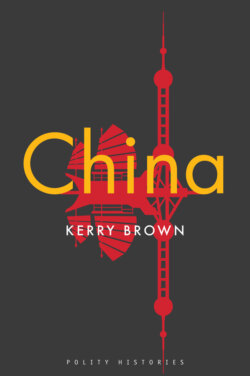Читать книгу China - Kerry Brown - Страница 19
Economic Priorities
ОглавлениеOne issue on which there was clear consensus was that China’s renewal needed a sound material basis. The decision was made to achieve this by centrally controlled plans operating within a political framework supplied by the Party itself, though partly building on the template initiated by the previous Nationalist government during the war. This planning system has been characterized by historian Andrew Walder as one which was more pure than the Soviet model it was copied from.6 The first Five-Year Plan in 1953 set a number of targets. The main priority was to ensure a high level of GDP growth. According to Chinese government data, from 1953 to 1978, GDP growth averaged 6.7 per cent annually. There is a lack of clear statistics from this era, with some saying the real figure was a more modest 4.5 per cent.7 But there was definitely growth. Per capita levels of wealth rose from around US$200 by values varying from 13 to 1 per cent growth a year until 1961, when the calamitous impact of the Great Leap Forward (see below) and the famines resulted in a drop of over 25 per cent.8
The introduction of a planned economy had two main characteristics. The first was to mark a shift away from the business model of small entrepreneurial companies that had existed prior to the 1950s. China had been a country of artisan business people, largely working in small family-owned enterprises. Larger corporations and industrial companies that had characterized Western capitalism had never existed. ‘The organization of large shareholders’ companies, on which the development of Western capitalism was founded,’ historian Marie-Claire Bergère wrote, ‘implied a distinctive hierarchy and gave shareholders the right to supervise the company’s management. In contrast, traditional Chinese capitalism depended upon networks of personal relations and family and geographical systems of solidarity, favouring forms of lateral communication rather than vertical hierarchies.’9 Under Communism, the desire was for industrialization, steep increases in material living standards, and a shift away from agriculture towards manufacturing and mechanization. Mao himself referred to state capitalism, a new kind of economic model in China, when he wrote in 1953 that ‘the present-day capitalist economy in China is a capitalist economy which for the most part is under the control of the People’s Government.’10
The second feature was the emphasis on class struggle and the need to transform society more radically, innovations taken by Mao from Marxist-Leninist theory. In ‘Correct Handling of Contradictions Among the People’, Mao declared that the Chinese bourgeoisie, since the conversion of privately owned industrial and commercial entities in the previous year, were ‘being transformed from exploiters into working people living by their own labour’. As long as they still got revenue from their enterprises, they had ‘not yet cut themselves loose from the roots of exploitation’.11 After Mao’s death, the original words unpolished by his editors were finally issued. They were even more categorical: ‘During past decades have the capitalists been so wise that they don’t have to remould even a little? I don’t think so. Even I need to remould [myself].’12 The ensuing Great Leap Forward from 1958, aimed at accelerating the country’s development and increasing the collectivization of industry and agriculture, was the tool by which to achieve this grand transformation.
Many of China’s key industrial conglomerates, some of which exist in some form to this day, were founded in the 1950s during the first Five-Year Plan period. The ‘Danwei’ (work unit) system was set up around many of these, supplying education, kindergartens, healthcare, accommodation, work, and provision for the elderly. One of the striking features of the CPC’s development over this time was the ways by which, through economic, educational, and other means, it was able to move into almost all levels of society, and all areas of life, largely enjoying a monopoly. It achieved this remarkably quickly, becoming by the end of the 1950s the sole, nationwide, uncontested source of organization and political expression. ‘Society has been politicized to an unprecedented degree,’ Political scientist A. Doak Barnett observed a decade later. These changes had led to ‘a great expansion of the organizational apparatus of political power at all levels. … The regime has had to build new institutions to enable the nation’s leaders not only to police the entire society, but also to manage the economy as a whole and indoctrinate the mass of the population.’13
